Tucked away in the highlands of Hà Giang, the small…
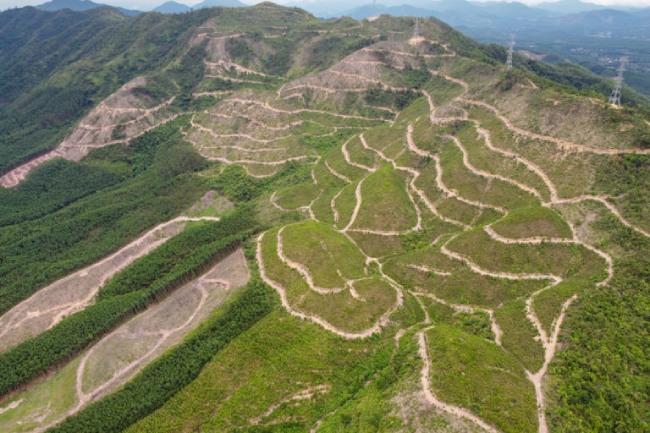
‘Drastic forest development’: Vietnam to plant 1 billion trees — but how?
- After a string of deadly typhoons in late 2020, Vietnam’s prime minister called for the country to plant 1 billion trees nationwide by 2025 to reduce the risk of landslides and flooding.
- Surprisingly, the government says tree planting will be concentrated in developed areas such as cities and industrial zones; it has not released further specifics on what species will be planted, where, by whom, or the cost.
- Past reforestation campaigns have succeeded in increasing the country’s overall tree cover, but mainly by establishing plantations of non-native species that are regularly clear-cut for paper or timber. Some organizations and farmers are working to change the way Vietnam approaches reforestation.
- This story was produced with support from the Rainforest Journalism Fund in partnership with the Pulitzer Center.
In October and November of 2020, a relentless barrage of nine typhoons and tropical storms slammed into Vietnam, setting off record floods and countless landslides. Nearly 200 people died, and property damage was estimated at $1.5 billion.
Then-Prime Minister Nguyen Xuan Phuc responded on Nov. 10 by calling for 1 billion trees to be planted nationwide by 2025 in hopes that increased forest cover would help prevent future landslides and reduce flooding.
The billion-tree program is now official government policy with a number of aims, including protecting ecosystems, improving scenery, responding to climate change, and aiding economic development. But the government has yet to release specifics on what species will be planted where and by whom, or the cost and source of funding.
And while the initiative was created in the wake of natural disasters that heavily impacted communities in mountainous areas, especially in central Vietnam, it places most of its emphasis elsewhere.
“The Ministry of Agriculture and Rural Development [MARD] created a draft circular, and if you look at it, 85% of the trees are planned for urban areas and industrial zones, so only 15% for upland areas,” said Phuc Xuan To, a program analyst at the international NGO Forest Trends. “Of course urban and industrial zones are important, but not as important for preventing and mitigating the impacts of floods and landslides caused by tropical storms.”
MARD did not respond to requests for comment.
The government directive outlining the program, which is only available in Vietnamese, notes that planting will be concentrated in urban areas, industrial zones, export-processing zones, and traffic corridors, but does not indicate why. It begins by noting the impact of climate change and extreme weather events on lives and property, and calls “drastic forest development” both “an urgent task and a long-term strategic task.”
To be sure, a lack of green space is a chronic problem in Vietnam’s urban areas. For example, the government of Ho Chi Minh City, the country’s commercial center, says the city has just 0.55 square meters (6 square feet) of public park per resident, compared to 30 m2 (326 ft2) per person in Singapore. City officials have already begun planting trees under the program after years of urban tree loss due to infrastructure development.
Nonetheless, Phuc said he was surprised by this emphasis on cities. “When Vietnamese people hear about 1 billion trees, we think about forests,” he said. That many trees could create up to 500,000 hectares (1.2 million acres) of new forest, but MARD’s plan calls for planting just 80,000 hectares (198,000 acres), with the rest of the trees going into urbanized areas, he added.
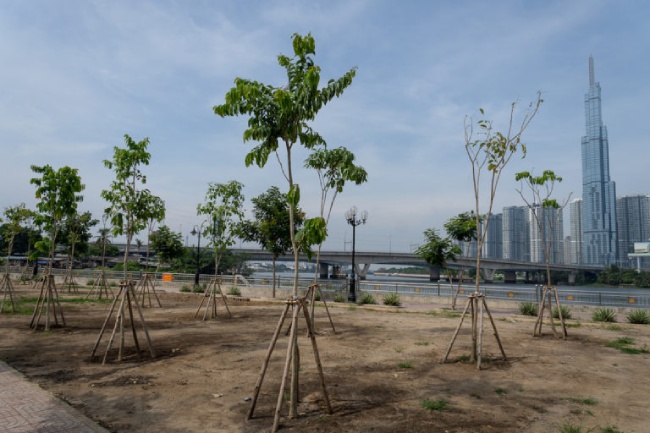
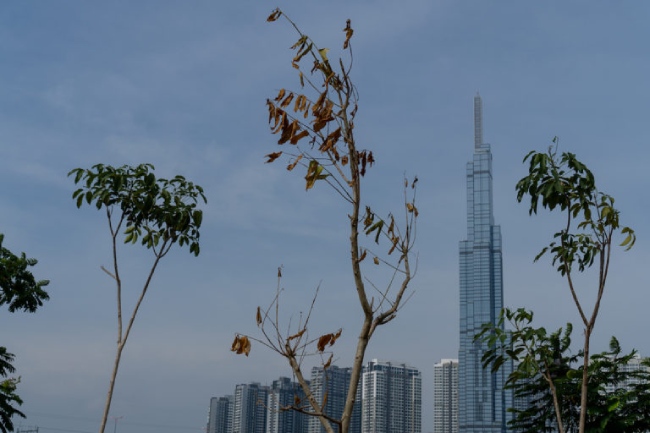
Vietnam’s reforestation history
Tree planting directed by the central government can be traced back to the late former president Ho Chi Minh, who began a Lunar New Year tradition of planting trees in 1959, when Vietnam was divided into two countries.
According to a yet-to-be-published research paper from 2020 about large-scale reforestation programs in Vietnam, 1992 saw the implementation of the 327 Project, a five-year, $68 million nationwide reforestation program. However, this was criticized for placing wood production over food security and focusing on exotic tree species such as eucalyptus and acacia.
In 1998, the government introduced the national 5 Million Hectare Reforestation Program (5MHRP), which cost more than $1.5 billion through 2010, dramatically increasing the scale of the 327 Project. 5MHRP did not meet its area-based reforestation goals, and in some provinces encouraged the replacement of natural shrubland that local communities lived off with monoculture plantations, generally acacia, managed and periodically clear-cut by smallholders.

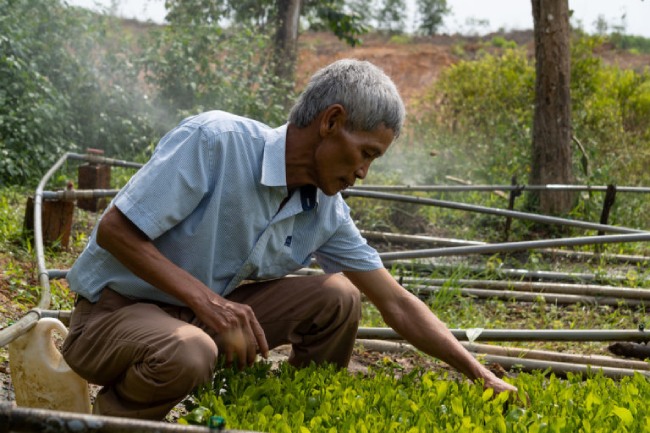
Smallholders are a major aspect of forestry in Vietnam, as they control at least half of the country’s planted forest area, and in rural areas such as the mountains outside Hue, plantations are the main source of income for residents. Plantation forests generally offer fewer environmental benefits than native forest ecosystems; for example, they shelter less wildlife, offer less protection from storms, and store less carbon.
Despite these shortcomings, initiatives such as the 327 Project and 5MHRP did have an impact on raw forest figures. Vietnam’s forest cover grew from 28% of the country, or 9.4 million hectares (23 million acres), in 1990 to 42%, or 14.6 million hectares (36 million acres), in 2020, according to figures in the 2020 paper. Both natural forests and plantations grew during this time, but plantations grew more rapidly, according to Open Development Mekong. As of 2016, natural forests comprised about 71% of total tree cover; of this, only 0.25% is primary forest.
“On one hand, forest cover has expanded, so if that’s your metric, then reforestation has been somewhat successful,“ said Pamela McElwee, an associate professor of human ecology at Rutgers University in New Jersey, U.S., who co-authored the 2020 paper. “But it doesn’t say anything about the quality of forests and what their long-term status will be.”
McElwee said there are major regional differences in how reforestation has been pursued, given Vietnam’s diverse geography. While swaths of central Vietnam are now carpeted with non-native acacia plantations for harvesting, parts of the Mekong Delta have successfully expanded or, at the very least, maintained indigenous mangrove forest cover that is intended to stay in place and protect coastal communities.
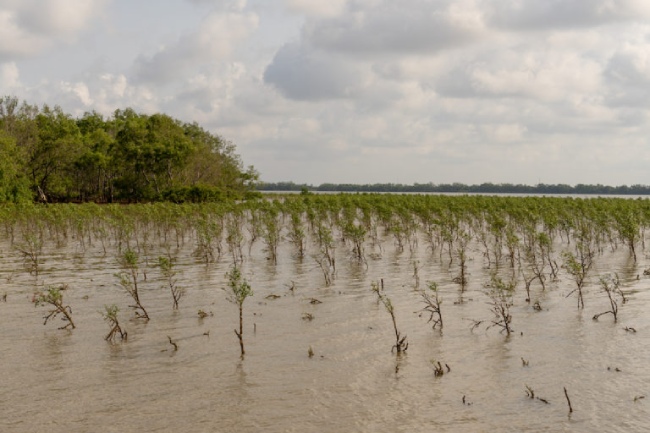
The acacia problem
On the descent into the city of Hue in central Vietnam, the region appears an endless expanse of forested hills and mountains. At ground level, however, it becomes apparent that this is a ruse: mile after mile of mono-crop plantations, mostly growing acacia, cover the lowlands and foothills leading up toward the rugged border with Laos.
Acacia is not native to Vietnam, yet is has come to dominate this landscape, where thousands of smallholders grow it on harvest cycles of up to seven years for paper and timber production.
The forestry sector is of major economic significance, with the Vietnam Administration of Forestry aiming to hit $14 billion in exports this year.
“So acacia puts money in people’s pockets, but it has driven land stratification, and not everyone is benefitting from it,” McElwee said. “There are different models elsewhere [in Vietnam], for example some of the mangrove models rely on more diverse ecologies, but that does not happen with acacia: it is one species, and nothing else is there, and that’s not what people think of as a forest.”
Additionally, tall, thin acacia trees are easily knocked down in high winds, pulling up soil and increasing the risk of landslides.
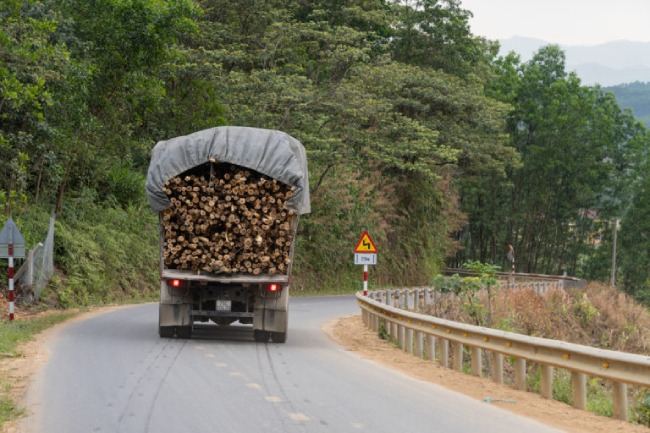
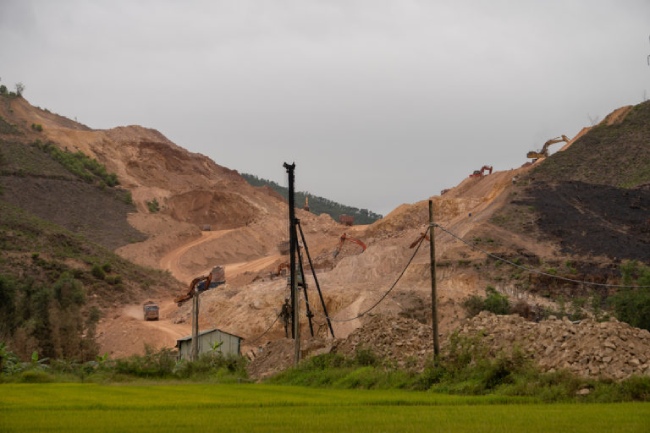
Huong Tra district, just outside of Hue in Thua Thien-Hue province, was lashed by last year’s storms, and nearby a series of landslides buried 17 workers at a hydropower dam, setting off a dramatic rescue operation involving the Vietnamese military. Only six bodies were ever recovered.
Endless acacia plantations, the types encouraged and subsidized by previous reforestation programs, spread out from the narrow, pockmarked road that follows a valley. The harvest rotations of small plots create a patchwork of 12-meter-tall (40-foot) trees next to freshly cleared land.
A tree farmer who requested anonymity in order to speak freely about his economic situation sat at a drink stall, taking a break from maintaining his land.
“I moved here in 2002 to start growing acacia,” he said in Vietnamese. “If I sell them for material to make paper, they grow for four or five years, but to get timber it should be over seven years. Economically, it doesn’t make that much money, and the soil is very hard to take care of.”
His simple concrete house down the road testifies to his meager income. According to the farmer, if he grows 1 hectare (2.5 acres) of acacia for five years, he can sell it for $3,470 in profit, or just $58 per month — and that is considered a good selling price. He has about 3 hectares (7.4 acres) of acacia and grows jackfruit, mango and banana trees around his home for supplemental income, as the soil on the valley floor is richer than on the hillsides.
“The acacia trees don’t hold water or soil, so when it rains, any good soil comes downhill,” he said. “On the highest parts of the hills, it can take 10 years for a tree to reach a height that it would normally reach in seven years.”
When asked if he or his neighbors have planted anything other than acacia, he said that is all they know: “But if I got to know about projects using other species, I’d love to learn about them.”
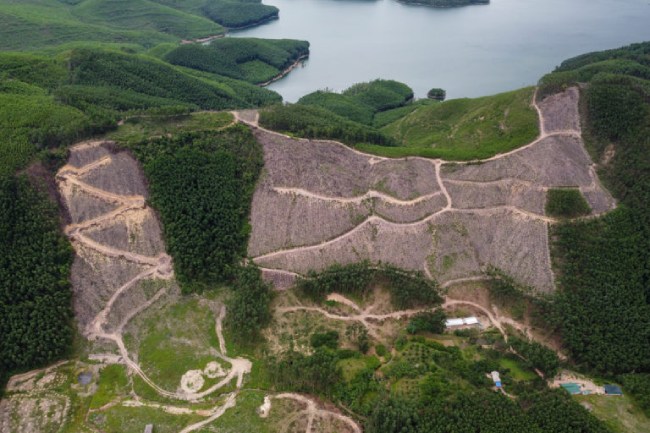
Mixed plantations
In fact, such reforestation efforts are underway across Vietnam thanks to conservation NGOs such as WWF-Vietnam and PanNature, as well as the initiative of individual farmers.
“In Vietnam, we focus too much on tree plantation initiatives where we just try to increase forest cover — wherever there are trees, it can count as forest — and we want to focus more on the quality and sustainability of those activities,” said Nguyen Hai Van, PanNature’s deputy director. “In previous programs we planted fast-growing trees like acacia, but for a long time nobody has talked about the sustainability of it, and there are so many questions on that issue.”
PanNature works with local communities, especially ethnic minority groups, in the Central Highlands and the mountainous northwest to revive traditional forest management methods.
“We try to restore forests and be very careful with which type of species we provide to the local people to plant,” Van said. “We consider the soil quality, the microclimate, whether it fits with the native ecosystem, what value and benefit people can get if they plant that tree.”
Nguyen Duc To Luu, PanNature’s resource governance program manager, added that they don’t strictly focus on trees either; instead, they mix in shrubs, medicinal plants and fruit plants. This gives people who rely on the forest for their livelihood a more diverse income source, while also avoiding the pitfalls of monocrop plantations.
“We don’t go for big plantations of industrial species, instead we want to use small-scale projects conducted by local people allocated with multipurpose species and mixed plantations, not just timber,” Luu said. “We provide not only the seedlings; we take people from the beginning of seed production to plantation design to site selection and protection and care. We try to create a long-term relationship with communities protecting the forest.”
PanNature also recently discovered a population of endangered northern white-cheeked gibbons (Nomascus leucogenys) near one of their project sites in Son La, a province in the remote northwest. They plan to plant fruit trees that the primates can feed on while extending their habitat through new mixed forests.
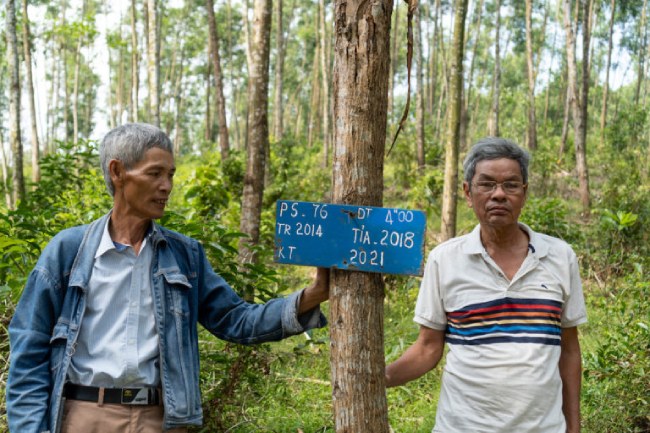
In Thua Thien-Hue, meanwhile, WWF-Vietnam is working with farmers like Nguyen Quang Hoa on an alternative method of reforestation that could provide a model for the billion-tree program.
“We still replant harvested acacia, but at the same time we also put in native species that last longer,” Hoa said at his house next to a cemetery in the lowlands outside Hue. “So when farmers want to take the acacia, they will just cut those and leave the others.”
This project is just a year old, but Hoa took us to a large farm owned by Phan Huu Tan in Huong Thuy district. Spread over 130 hectares (321 acres), Tan’s property is much larger than that of the average smallholder, and outside of acacia he also grows oranges, peppers, bananas and passionfruit.
“I cut down a lot of trees earlier in my life in both Vietnam and Laos, and now I want to help grow them back,” Tan said.
With support from WWF-Vietnam, he has carved out 7 hectares (17.3 acres) for mixed planting, a move away from solely acacia. Here, 500 indigenous tree seedlings have been planted among 3,000 acacias on each hectare.
The indigenous species include Indian mahogany (Chukrasia tabularis) and resin tree (Dipterocarpus alatus), and the year-old saplings are utterly dwarfed by the mature acacia surrounding them.
“We will let them grow into my grandchildren’s generation,” Tan said. “But I don’t want to plant them too deep into the property, as I can’t monitor everything and I worry people will cut them down.”
He said he hopes to eventually expand the mixed-species area to 50 hectares (124 acres), a goal that would add thousands of native, long-living trees to his property. However, Hoa noted that for many, the economics of acacia will outweigh the environmental benefits of more diverse, healthier forests.
“People who have a lot of land will probably volunteer some of it for projects like this, but if they don’t have much land, they won’t, because they know that if they grow native trees, it will be their grandchildren who inherit them,” he said. “Planting acacia is something they know works, and they don’t want to take the risk.”
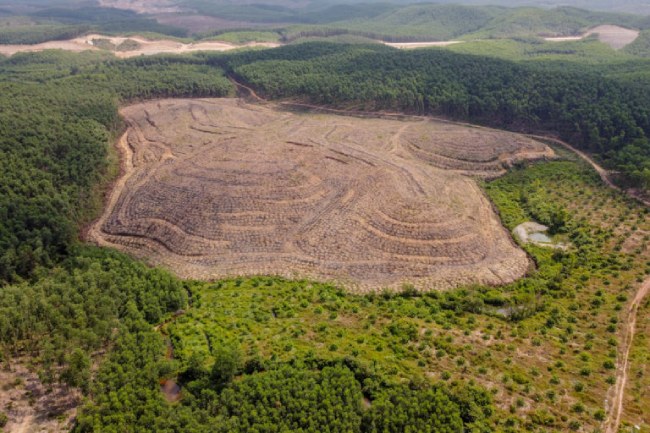
The future of 1 billion trees
While any moves away from total reliance on acacia in central Vietnam remain relatively small-scale, it is a trend that forestry experts like Van, Phuc and McElwee want to see.
“If we’re going to talk about long-term adaptation, I’d want to see provincial departments of forestry starting to talk about the fact that acacia is not an appropriate species in that context,” McElwee said. “It is not a durable, deep-rooted species, but you cannot rely on smallholders moving away from it themselves. They just cannot afford it, so if you want to make money off of the sort of natural forest that’s more diverse, you need longer-term subsidies. You’ve got to have money for households as they’re waiting for longer-term timber rotations.”
While it remains to be seen what kind of forest the billion-tree program will install in upland regions, Phuc, of Forest Trends, said that, ultimately, finding available land to plant new trees on may be the program’s biggest challenge there.
“There is quite a lot of land that could be used, but it is managed by local households, and you cannot tell them to plant trees how you want,” he said. “On paper there is about one million hectares [2.5 million acres] managed by local authorities, but in reality that has already been used by villagers for cultivation. It’s extremely difficult to find land, and one reason 5MHRP failed is because there simply wasn’t enough land to plant trees.”
This, Phuc said, is a major reason why the government is focusing on urban areas when it comes to planting over the next five years, despite having created the billion-tree program in the context of devastating landslides and flooding in mountainous areas.
Ultimately, it may be residents of Vietnam’s fast-growing cities who benefit most from this latest national tree-planting campaign. Additional urban tree cover would help combat worsening air pollution and reduce the heat-island effect caused by intense development.
Meanwhile, farmers like Hoa and Tan will remain amid vulnerable landscapes in the firing line of the country’s annual typhoon season, which is expected to become more intense in the future due to climate change.
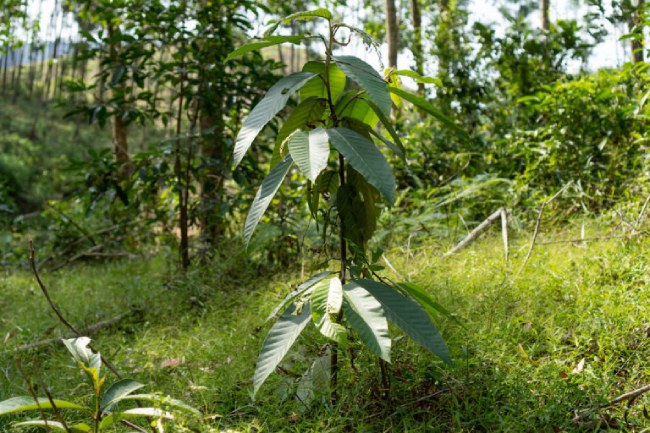
Source: Mongabay



